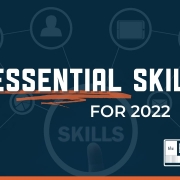5 New Ways To Think About the Selling Profession
I wake up nights thinking about why I so detest the idea of ‘convince and persuade’ in the sales process. In fact, Bryan Neale said in a recent podcast, “No place in selling for persuasion or convincing.” A bold statement, yes. But one I agree with.
So why is it so detesting to me?
I think I’ve always felt like persuasion and influence are something you do TO someone, not WITH someone. When a salesperson comes back from a sales call, the sales manager typically says (or thinks), “Did you convince them to use us?”
Or, if he doesn’t actually say that, it is an understood question.
And so begins the spiral of “doing it TO someone.” Even the very word “SELL” is an active verb that implies you are doing it TO another person.
So let’s try this another way…
Instead of thinking, “How do I persuade, convince or influence someone?” let’s ask the question in another, more passive voice:
“What do I need to do so that the person becomes persuaded, becomes convinced, becomes influenced by me so they make the decision that they want to make?”(Not the decision I want them to make.)
I think if we use the passive verb of ‘become persuaded,’ it’s much more positive and powerful than it is to do something TO someone – as in the active voice of persuade.
Here is a list that I’ve assembled of the things I think you can do to help the prospect become persuaded.
1.) Be sincerely curious and interested in their issues.
How many times have you been called on by a salesperson that is only interested in your issues in as much as it will lead to a sale for them?
- Old Persuasion: Seller is interested in prospect because prospect gives them money.
- New Persuasion: Seller is interested in prospect, whether they give you money or not.
2.) Fully understand the kind of pain they’re feeling.
 The fact is that your solution probably solves a problem of some kind for most clients. Even though we can suggest that “every client is different” (naturally, we don’t want to assume anything), we also have the luxury of experience in our businesses.
The fact is that your solution probably solves a problem of some kind for most clients. Even though we can suggest that “every client is different” (naturally, we don’t want to assume anything), we also have the luxury of experience in our businesses.
For example, in the sales training and coaching business, there are but a handful of problems that arise that we can help people with. And we know what those are going in so that we can spot them when they become issues.
- Old Persuasion: Seller pitches and convinces the buyer.
- New Persuasion: Seller seeks to understand the prospect.
3.) Understand the economic impact of the problem.
A person can become persuaded pretty quickly if they discover, through your questions, that the problem is costing them $1.5 million per year. If they come to that conclusion, you don’t have to be very “persuasive” or “convincing.”
- Old Persuasion: Justify your price.
- New Persuasion: Give attention to the cost of the problem-let them justify your price.
4.) Lay out your process.
This one little tip can be worth $1 million of income of your lifetime (assuming you work 20 more years). Yes, that’s $50,000 a year which might come through increases in income or reduction of time wasted dealing with people who won’t make a decision. The fact is that if you have a sales process that is in the buyer’s best interest to follow, you will always be in control of the sales cycle.
- Old Persuasion: Always be closing.
- New Persuasion: Think process.
5.) Detach, and get out of their space.
I wonder how many times you’ve lost a deal, not because you didn’t pay enough attention, but because you got all up in their business when it came to making a decision.
I said in last week’s post that whenever we feel like we’re becoming too eager for the sale, we need to drop back, take a breath and detach. A detachment is one of those principles that will help you become more persuasive because they sense you don’t need the business.
- Old Persuasion: Be enthusiastic.
- New Persuasion: Let them be enthusiastic.
All in all, I’d like you to consider these five points as you go about your business development and sales routine over the next month or so. Think about how you can become persuasive rather than how you can persuade someone to act in a certain way.





